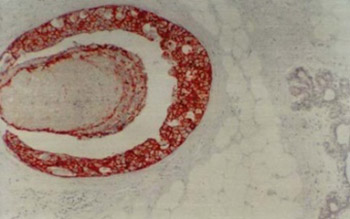C-Erb-b2 Oncogene Expression in Intraductal Proliferative Lesions of the Breast
DOI:
https://doi.org/10.17305/bjbms.2012.2533Keywords:
breast, proliferative lesions, C-Erb-b2Abstract
The ductal intraepithelial neoplasia (DIN) classification which proposes new approaches to the diagnosis, terminology and differential diagnosis of intraductal proliferative lesions of the breast was applied to a series of female patients comprising C-erbB2 oncogene expression which may serve as an adjunct to the morphology by immunohistochemistry. The study was performed using the data of 94 patients. There was no difficulty encountered in the diagnosis of intraductal hyperplasia (IDH). In patients with Atypical Ductal Hyperplasia (AIDH), the diagnosis could be made by using the 2-mm rule of the DIN classification in patients who exhibited cytologic and structural characteristics of Ductal Carcinoma in Situ (DCIS) alone or in conjunction with classical IDH patterns. However, in lesions that mimicked classical IDH patterns despite displaying cytological features of in situ carcinomas, the experience and view point of the pathologist played a more prominent role. When the DIN classification criteria were applied to grade DCIS lesions, although the system was found to be practical, it did not provide adequate differentiation in intermediate grade (grade II-DIN 2) patients and further improvement was considered desirable. Fourty-five cases (47.8%) IDH, 19 (20.2%) AIDH, and 30 (31.9%) were DCIS. There were statistically significant differences in the levels of c-erbB2 oncogene expression between IDH, AIDH and DCIS lesions (p<0.001). In DCISs, grade, cell size, pleomorphic nuclear atypia showed statistically significant associations with c-erbB2 oncogene expression. These results suggest that c-erbB2 oncogene expression is a valuable marker in the differential diagnosis and prognostic evaluation of patients with intraductal proliferative lesions.
Downloads














